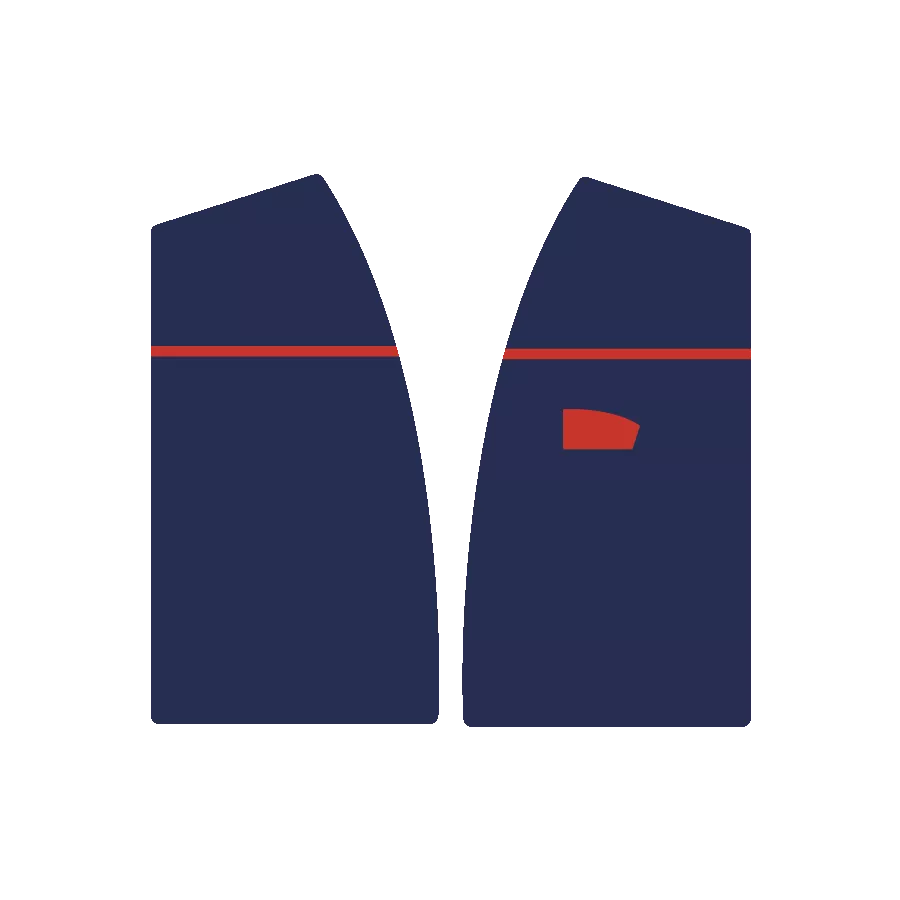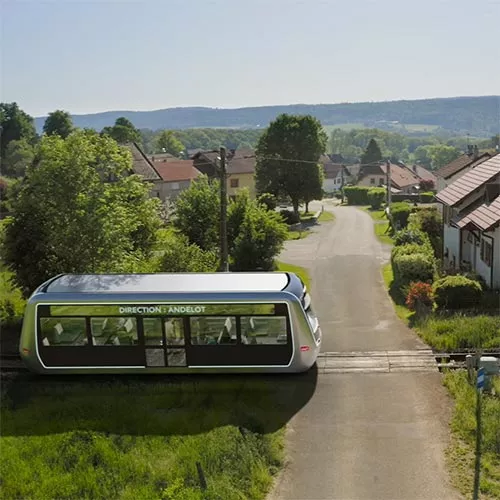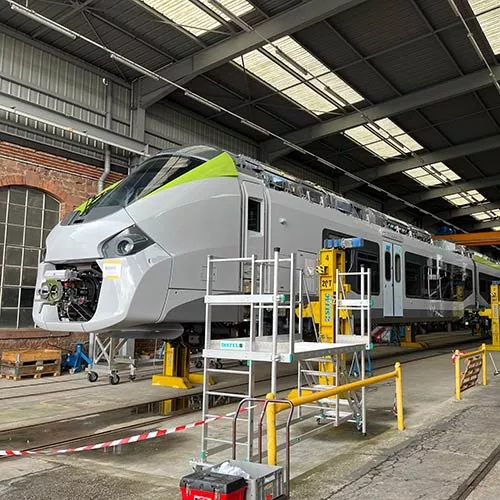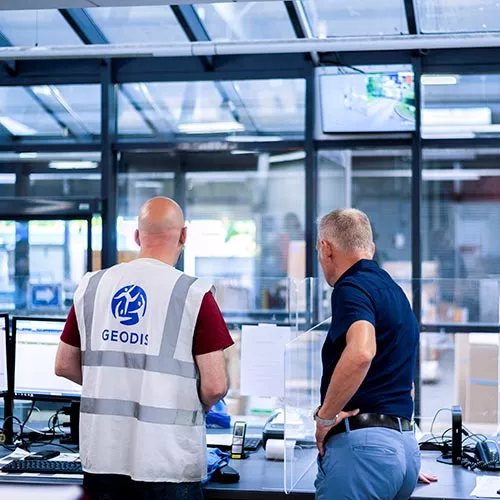Connecting regions across France: Grand Est
We’re actively involved in Grand Est’s economy: we support some 10,000 jobs and, together with all our stakeholders, boost quality of life there. How? Read on.
We contribute to the region’s economic growth

18,228
SNCF Group employees in 2024

€871m
other local jobs supported

66%
of our suppliers—1,255 in all—are SMEs and very small businesses
€1bn investment in sustainable tracks from Saarstahl
SNCF Réseau, the subsidiary that manages rail infrastructure, has placed a €1bn order for sustainable track components with steelmaker Saarstahl. Over the next 6 years, Saarstahl’s plant in Hayange, located in the Moselle region, will supply 170,000 metric tonnes of rails annually.
What sets Saarstahl tracks apart? They’re made entirely of recycled steel produced in electricity-powered furnaces. The process reduces carbon emissions by 70% compared to conventional methods, which rely on adding coal to iron ore.
In Eastern France: Saarstahl, the rail that rises from the ashes
En savoir plusEncouraging rail freight
Over 20% of France’s freight transits through Grand Est. Our subsidiary, Rail Logistics Europe, forwarded 8.35 million tonnes of cargo through the region in 2022, while its brand Captrain France carried 3.3 million tonnes in 2023. That means Rail Logistics Europe accounts for 90% of business at Woippy, France’s largest marshalling yard.
Actively enhancing quality of life in the region

Coming soon—a light train for rural communities
Draisy aims to revive small rail lines (around 100km) serving rural communities. This light rail project is part of France’s 2030 investment plan and is funded by Ademe, the nation’s environment and energy management agency. Compact and efficient, Draisy is just 14 metres long and weighs 20 tonnes—two-thirds the size of a conventional train. It promises to halve operating and maintenance costs, making it a sustainable and cost-effective option for rural mobility. We chose Grand Est’s Sarralbe-Kalhausen line as our test track for Draisy system certification trials in 2027.
Easier commuting with our SERM
Three SERM (metropolitan regional express service) projects are currently underway in this area at the crossroads of Luxembourg, Germany and Switzerland:
- The Strasbourg SERM extends the range of intercity express trains and coaches on main routes through the conurbation, as far west as the Vosges foothills, and east towards Germany. It also strengthens the European Metropolitan Express Network (REME).
- The Mulhouse SERM and its link with Basel aim to develop services as part of the launch of "RER Basel".
The Lorraine - Luxembourg SERM will help boost transport services along a corridor including Nancy, - Metz, Thionville and Luxembourg.
We’re contributing to the region’s energy transition with:
Hybrid TER trains
We’re developing less polluting TER rolling stock, including hybrid trains with onboard batteries that recharge through regenerative braking—a move that cuts energy consumption by 20%. The next stage is replacing thermal engines with high-capacity batteries. That’s what they do at CAF’s Reichshoffen plant, where the Régiolis dual-mode (electric-thermal) trainset was transformed into the Régiolis tri-mode (electric-thermal-battery). In 2024, we trialled a hybrid train commercial service on the Strasbourg - Sarreguemines line.

Hydrogen-powered trains
On unwired sections of the network, our H2 trains will be powered by hydrogen stored in the train’s tanks. The pre-series trainsets have been assembled at CAF’s Reichshoffen plant, where testing in real-world operating conditions began at the end of 2024. Four French regions, including Grand Est, have placed orders for H2 trains, and the first commercial services is set to start in 2026.

Low-carbon last-mile deliveries
GEODIS has joined forces with Urban Logistic Solutions (ULS), a Grand Est company based in Alsace. Together, they offer eco-friendly delivery solutions for Strasbourg’s city-centre shops, companies and residents, using barges pushed by towboats and e-bikes with trailers.
Solar power plants on SNCF real estate
In 2023, we set up SNCF Renouvelables, our solar energy production subsidiary. Over the next 10 years, it will install photovoltaic panels on 1,000 hectares of unused SNCF real estate and generate around 1,000 MWc—that’s 20% of the electricity we currently consume. With two sites eligible for solar energy production—in Mont Saint-Martin and Valleroy—Grand Est is at the forefront of this project. By creating a solar energy business, we’re fostering energy transition and reindustrialization in France’s regions.
Upgrading the rail network
SNCF Réseau is improving the region’s infrastructure, ensuring it is safe and robust. For instance, it is upgrading the line and level-crossings between Reims and Laon, at a cost of €71 million.
Fourchard, doing construction work on our railways for 90 years
French SME Fourchard works on SNCF Réseau construction sites. Here's an example of the kind of work they do, here renewing tracks and ballast with our agents on a site near Reims. To this effect they used a tamping machine, the only one of its kind in France.
Fourchard, the expert in railway works
Prevention and awareness-raising campaigns in schools
SNCF employees regularly visit schools, from primary to secondary school, to raise awareness of risks around trains and encourage children to behave responsibly when traveling by rail or in a station. For example, Sandrine Carboni, a technical assistant in Structural Engineering, talked with students at a primary school in Châlons-en-Champagne.
Railway workers, get on the board! Report from a primary school in Châlons-en-Champagne
Serving local communities through the SNCF Foundation
In Grand Est, we work with nonprofits to support young people. Together, we organize structured discussions to help them explore career options and provide hands-on introductions to manual trades. We also offer food aid to students in need. We have 8 non-profit partners in Grand Est. Several now include an environmental focus in their efforts, actively raising awareness of sustainability issues among adolescents and young adults.
Share the article